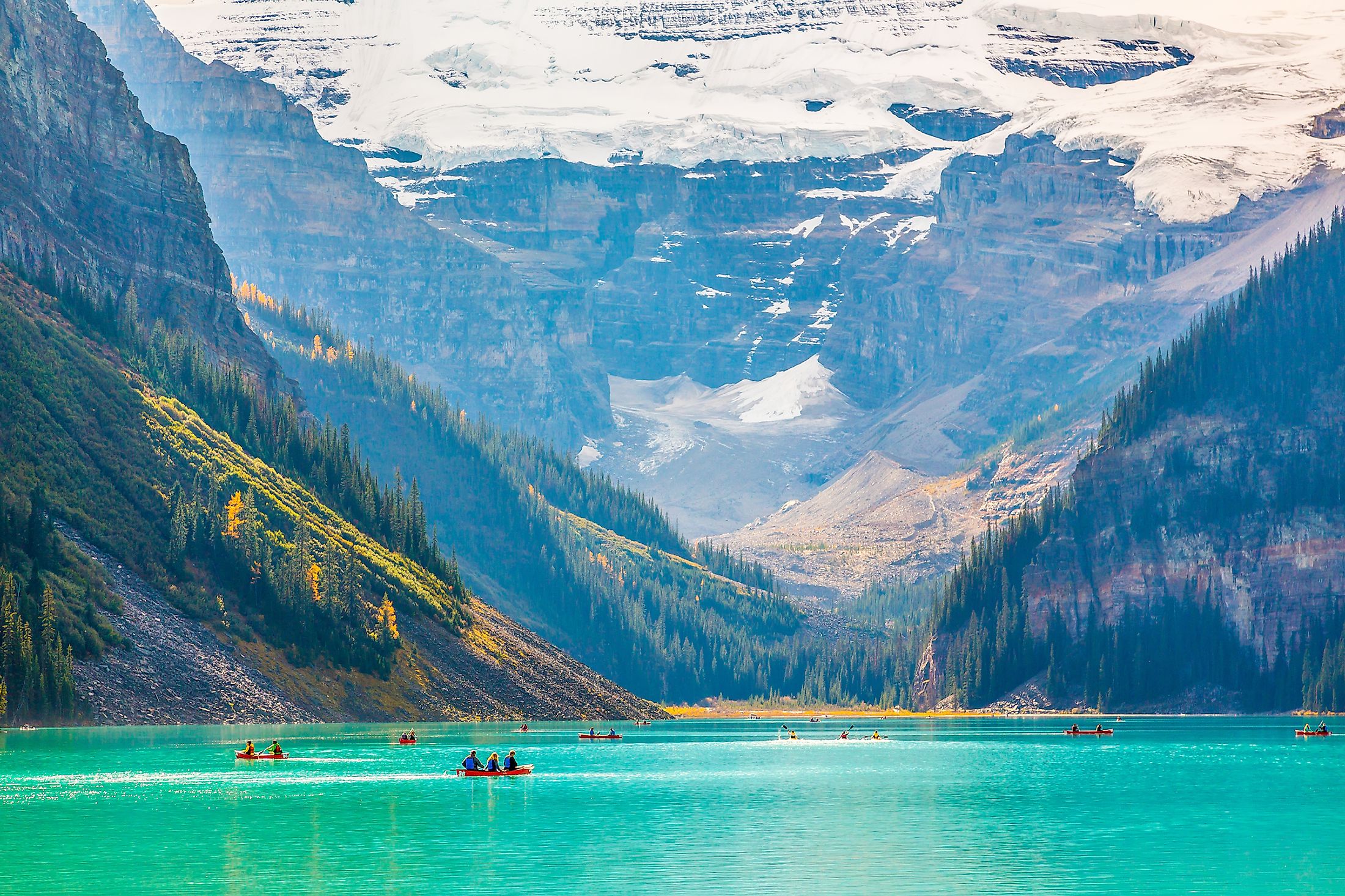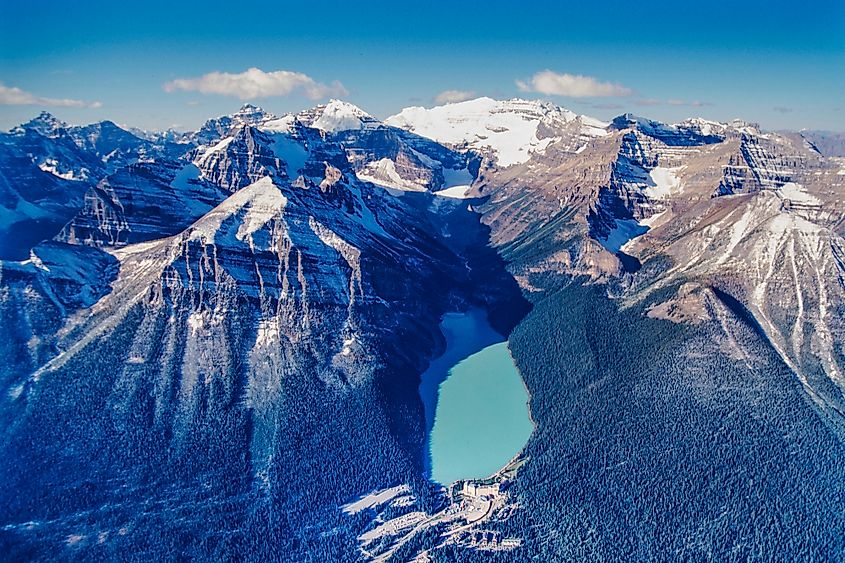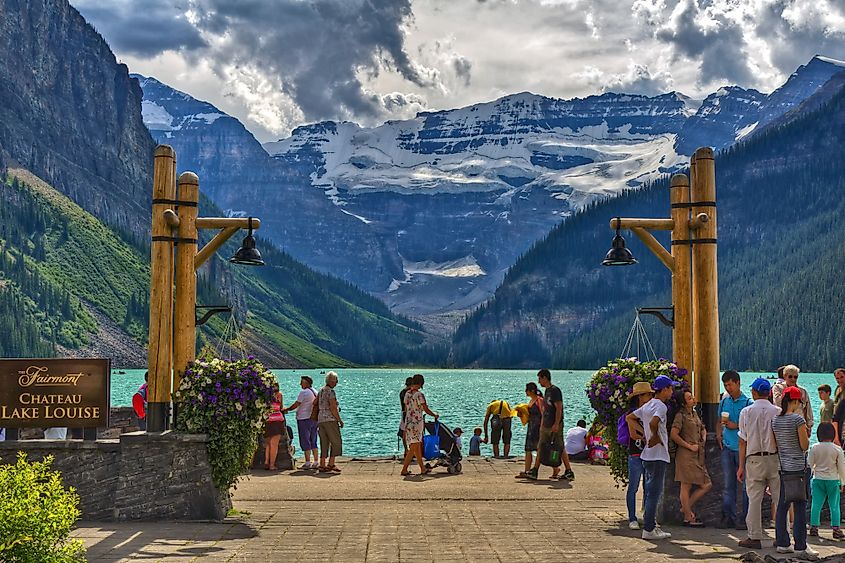
Lake Louise
Lake Louise is a small glacial lake located within the Banff National Park in the Canadian Rockies. The lake, named in honor of Princess Louise Caroline Albert, lies approximately 5 kilometers west of Lake Louise Hamlet and covers 0.8 square kilometers. The lake is famous for its turquoise blue color and freezes for most parts of the year, with water temperature rarely rising above 4 degrees Celsius. It is surrounded by some spectacular mountains, including Mount Victoria, which is covered by a massive glacier. Lake Louise is a natural beauty that draws millions of tourists, especially during the summer months.
Contents:
Location

Lake Louise is located within Alberta’s Banff National Park in the Canadian Rockies. Banff, Canada’s oldest national park, is located approximately 110 kilometers west of Calgary and near the Trans-Canada Highway. The lake is situated 5 kilometers southwest of the community that goes by the same name. On the eastern shores of Lake Louise sits the magnificent Fairmont Chateaus Lake Louise, Canada’s grand railway hotel and luxury resort constructed in the 20th century.
Brief History
In 1882, Tom Wilson, while surveying the lake region, name the Turquois lake “Emerald.” However, the name only lasted until 1884, when it was changed to Lake Louise in honor of Princess Louise Alberta, then wife of Alberta’s Governor-General. The name “Emerald Lake” was then given to a nearby lake located 39 kilometers from Lake Louise. In 1890, a Pacific Railway manager named Cornelius Van Horne built a log cabin on the lake’s shore that could accommodate 50 guests. However, the cabin was expanded severally in the 1900s and was nicknamed “Hollywood of the North.
Lake Louise’s popularity as a tourist destination is closely tied to mountaineering in Canada and North America. The first North American mountaineering death occurred on Mount Lefroy, one of the mountains overlooking the lake. As a result of this death, the Canadian Pacific Railway hired Swiss professionals to help improve the safety of the mountaineers in the area. The Swiss impact on Banff opened up Lake Louis as a tourism destination all year round.
Geography
Lake Louise is a small lake covering a surface area of 0.8 square kilometers in the Banff National Park. It is fed mainly by meltwater from the glacier on top of the overlooking mountains, including Fairview Mountain, Mount Niblock, Mount Whyte, and Mount Temple. It drains into the Bow River via the 3-kilometer long Louise Creek. The meltwater, which drains into Lake Louise, carries with it glacial flour, causing the lake to have the turquoise blue color.
The heavy snowfall in October ensures the lake remains frozen for most of the year. However, the lake begins to freeze in November, around the same time Lake Louise Ski Resort opens up. Lake Louise remains frozen until the first week of June when the ice begins to melt. However, the ice can unthaw either earlier or much later.
Attractions

Lake Louise is one of Alberta’s popular tourist destinations, with tourists visiting the lake region at any time of the year. Long hiking trails surround the lake, leading to several places, including Saddleback Pass, Devils Thumb, Lake Agnes, and Mount Whyte, among other places. Hikers can also enjoy horseback riding and mountain biking on some of the trails. The mountains overlooking the lake provide rock climbing opportunities, while canoeing and kayaking are popular sports during summer. Lake Louise Ski Area is a popular area for snowboarding and skiing.











